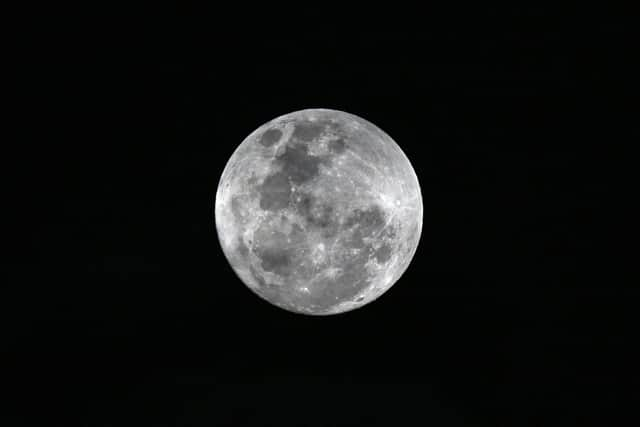The Lunar Codex: a collection of poetry, art and film will be sent to the moon
and live on Freeview channel 276
Over 30,000 creatives from 157 countries will have their work sent to the moon in a new project in collaboration with NASA’s Artemis missions.
A collection of art, poetry, film and other works will be sent in four “time capsules,” collectively termed the “Lunar Codex.” The works have each been digitised on memory cards or transferred onto NanoFiche, a nickel-based film technology that can preserve large amounts of analog information in microscopic size.
Advertisement
Hide AdAdvertisement
Hide Ad

What is The Lunar Codex?
The Lunar Codex is made up of four time capsules, called the Orion Collection, the Nova Collection, the Peregrine Collection and the Polaris Collection.
The Orion Collection has already been launched into space. It was taken on the Orion spacecraft by NASA’s Space Launch System as part of the Artemis 1 mission and returned to Earth on 11 December, 2022.
The Nova Collection will be the next one launched, sometime in October or November this year. It will be taken into space by a SpaceX Falcon 9 rocket with a NASA CLPS-2 Mission Lander to the Malapert A crater at the lunar south pole.
That launch will be followed by the Peregrine Collection the following month, which will be taken to a small lunar plain named Sinus Viscositatis onboard an Astrobotic Peregrine Lander sent to the moon by a United Launch Alliance Vulcan Centaur rocket.
Advertisement
Hide AdAdvertisement
Hide AdThen the Polaris Collection will be taken to the Nobile Crater by a NASA Viper rover after landing onboard an Astrobotic Griffin Lander launched by a SpaceX Falcon Heavy rocket.
What works will be featured on The Lunar Codex?
Many of the works are space-themed and include Alex Colville’s 1980 screen print, New Moon, Sean William Randall’s 2016 painting The Dreaming Moon and Doreen Foster’s 2012 etching and aquatint print Moon Dance.
The Lunar Codex also contains a large collection of work from female artists. These include linocuts by Ukrainian printmaker Olesya Dzhurayeva, who evacuated Kyiv in April 2022 amid the war with Russia. Other notable works include 2021 Bennett Prize winner Ayana Ross’s painting New American Gothic (2020).
A collection of the work can be viewed on The Lunar Codex website.
Advertisement
Hide AdAdvertisement
Hide AdThe project was founded by semiretired physicist Samuel Peralta. On the website he said: "I dreamed of going to the moon and one day it was possible. I’m sharing that dream with many of the artists, authors, musicians, and filmmakers whose work I love.
"The creatives of the Lunar Codex are our representatives from Earth to the Moon, our ambassadors from this era to the future.
“Together, these collections make up the ‘Lunar Codex,’ the first significant placement of contemporary arts on the moon in over 50 years. While focused on visual art, the ‘Lunar Codex’ also includes a substantial collection of contemporary books, stories, poetry, essays, music, films, and more,” Peralta said.
He added: "Some have called the Lunar Codex a "time machine to the future." Others have called it the "ultimate anthology," and referred to it as a "museum on the Moon." At its essence, the Lunar Codex is a set of time capsules, a message-in-a-bottle to future generations."
Comment Guidelines
National World encourages reader discussion on our stories. User feedback, insights and back-and-forth exchanges add a rich layer of context to reporting. Please review our Community Guidelines before commenting.
